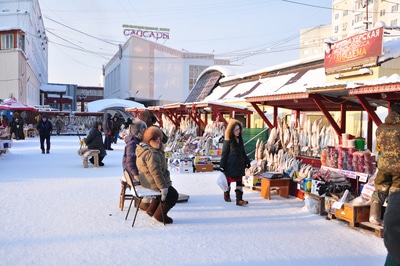
Have you ever wondered where is the coldest place on Earth to live? Maybe you’re looking for a new home after getting tired of extreme heat. Or perhaps you’re just looking for a memorable vacation that will test the limits of your endurance. Either way, we have the answer for you in this article.
Because temperature records are sometimes unreliable, especially in remote parts of the world prone to extreme cold, we’re ranking the coldest places on Earth where humans live loosely here. Some of these records are subject to debate by scientists, but we consider the record numbers here to be as accurate as possible. Some automated weather stations, especially in Antarctica, have recorded slightly lower temperatures than those cited here, but we only count a place if it has at least one known permanent year-round resident.
11 of the Coldest Places in the World to Live
With that in mind, here are 11 of the coldest places in the world where humans live.
1. Vostok Station, Antarctica
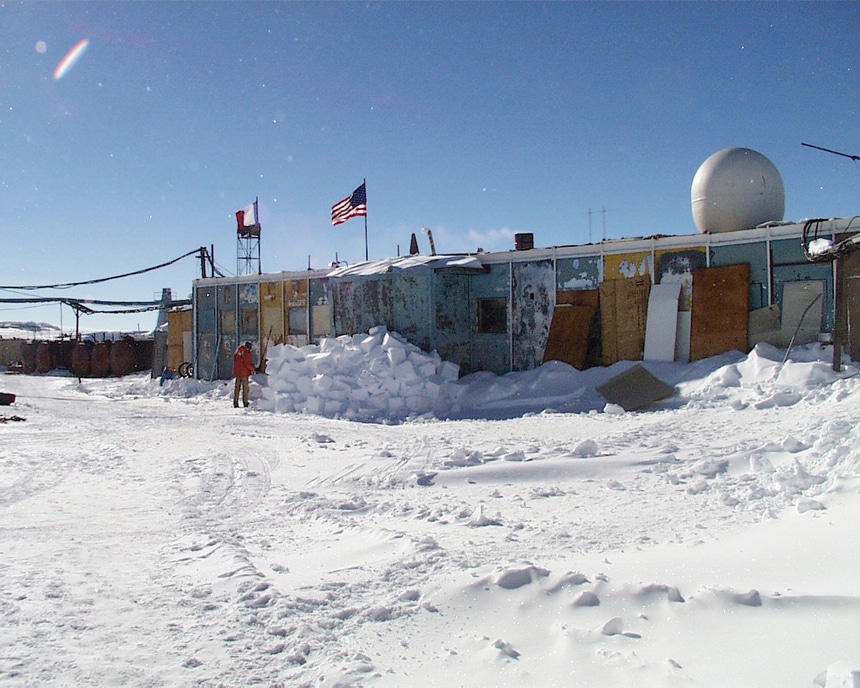
- Record Lowest Temperature: -128.6°F (-89.2°C) on July 21, 1983
- Population: 20-25 during the summer, 10-12 during the winter
The coldest place on Earth is Vostok Station, one of several research outposts in Antarctica. It is not exactly at the South Pole, but its location high on a remote part of the Antarctic ice sheet makes it even colder than the South Pole, which is situated at a slightly lower elevation. Vostok Station is so cold because of the long polar nights (during the winter, it’s dark 24 hours), its high elevation, and the fact that many thousands of square miles of ice surround it.
Vostok Station holds the formal record for the coldest temperature directly measured on Earth’s surface, with a reading of -128.6°F (-89.2°C) on July 21, 1983. However, high-resolution satellite data has uncovered a few pockets of even colder air along a nearby ridge in recent years. The new satellite record is -136°F (-93.2°C) on August 10, 2010. These remote and very small pockets of cold air do not (yet) have permanent human inhabitants, so Vostok Station remains the coldest inhabited place on Earth.
Vostok Station is home to just a handful of hardy scientists researching ice cores, magnetonomy, and the unexplored reaches of Lake Vostok, a vast lake that sits underneath 13,000 feet of ice. Vostok is ideally suited to monitor changes in Earth’s magnetic field, which protects us from solar flares, among other vital functions, because it is very near the southern geomagnetic pole. Vostok was established on December 16, 1957, by what was then the Soviet Union. Russia now runs the station.
2. Amundsen-Scott Station, Antarctica
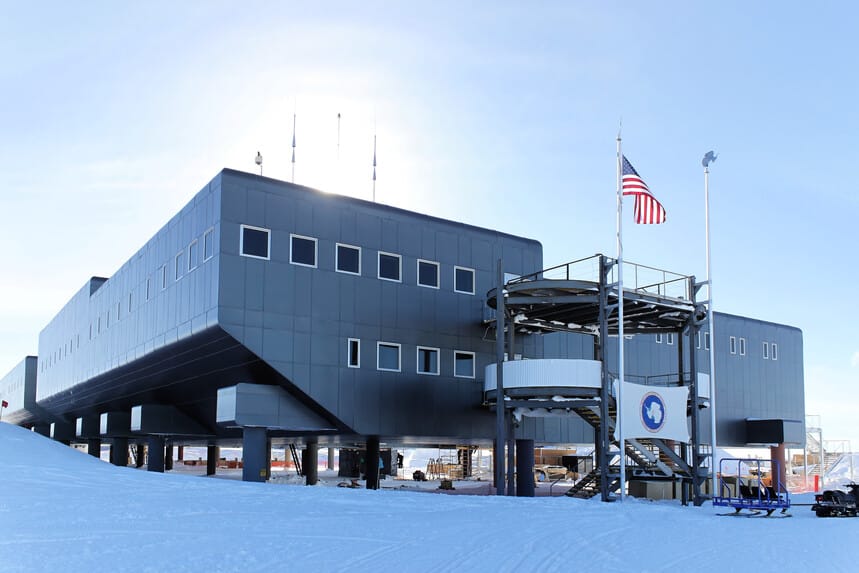
- Record Lowest Temperature: -117.04°F (-82.8°C) on June 23, 1982
- Population: 150 during the summer, 50 during the winter
Located exactly at the geographical South Pole, Amundsen-Scott Station is the second coldest place on Earth where people live with a record low temperature of -117.04°F (-82.8°C) on June 23, 1982. Like Vostok Station, Amundsen-Scott is cold because it’s in Antarctica on top of a very thick sheet of ice. Because Amundsen-Scott station is located exactly at the South Pole, there is only one “day” per year. The sun rises once on the September Equinox (Spring Equinox) and remains in the sky until it sets on the March Equinox (Autumnal Equinox). At this point, the long polar night sets in for the next six months.
Amundsen-Scott Station is inhabited by scientists researching various topics, from climate change to biology to astronomy. Most research projects can be conducted in the summer when calmer winds and less frigid (but still cold!) temperatures make living there a bit safer. However, some research, especially astronomical research that relies on dark skies to observe Outer Space, must be done in the winter. Thus a skeleton crew of a few researchers, plus station support staff, brave total darkness, brutally cold temperatures, and fierce winds in the name of unlocking some of the Universe’s deepest secrets and keeping the station in good condition so it is ready for the following summer’s crop of scientists.
The Amundsen-Scott station was established on November 20, 1956, by the United States Navy. The station is still operated by the United States, mainly through the National Science Foundation’s Antarctic Program.
3. Verkhoyansk, Russia
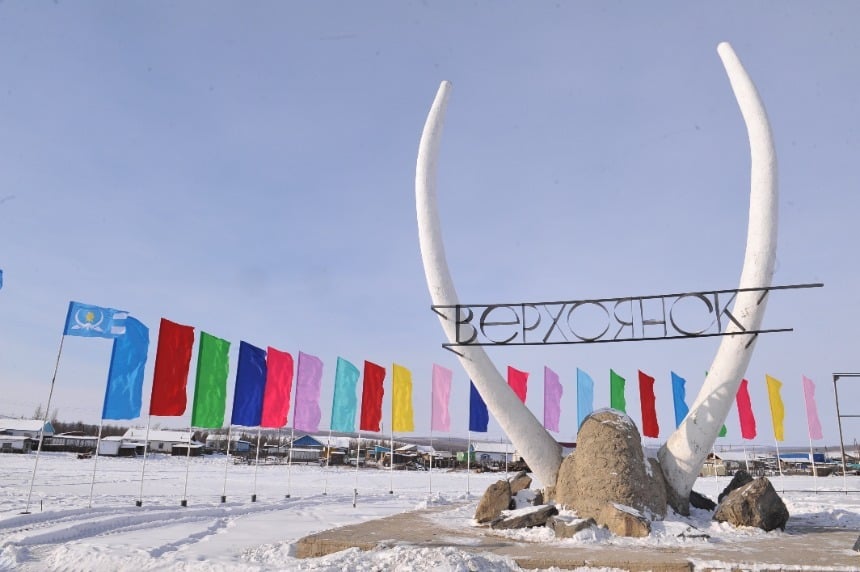
- Record Lowest Temperature: -90.04°F (-67.8°C) on February 5 and 7, 1892
- Population: 1,311 as of the 2010 census
Located deep in the Siberian tundra of northeastern Russia, Verkhoyansk is the coldest populated place in the Northern Hemisphere. Temperatures there regularly plunge well below zero, with the record-holding value of -90.04°F (-67.8°C) recorded in February 1892. Unlike the Antarctic stations, Verkhoyansk can get hot during the summer once the snow melts. On June 20, 2020, Verkhoyansk reported a record high temperature of +100.4°F (38°C), making Verkhoyansk the most likely candidate for the widest-ranging temperatures in the world. If you like heat and cold in the most extreme forms possible, Verkhoyansk could be your place.
Verkhoyansk is still a hub of fur trading and reindeer raising, though it is perhaps best known for its site as a gulag for political prisoners during Soviet rule. The town was founded in 1638 by the Cossacks and has remained a small outpost ever since.
4. Oymyakon, Russia
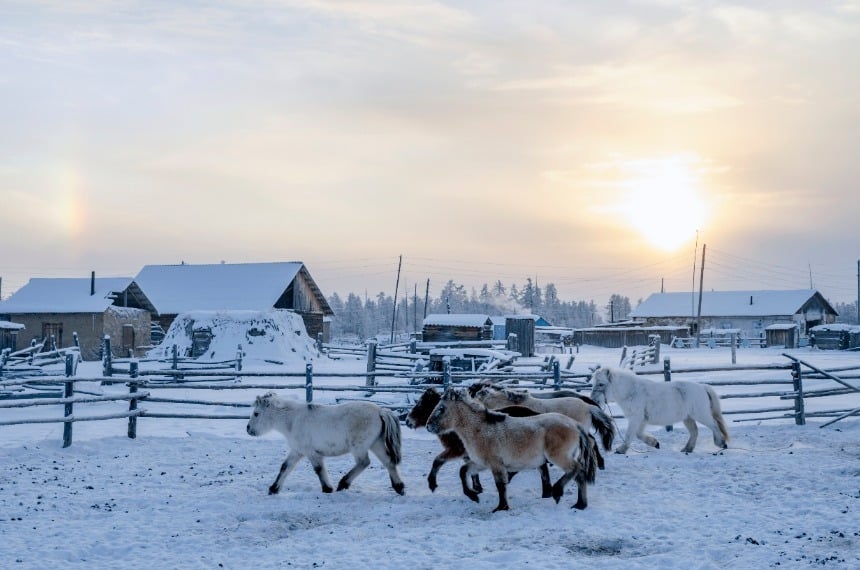
- Record Lowest Temperature: -89.9°F (-67.7°C) on February 6, 1933
- Population: 462 as of the 2010 census
Another tiny outpost in the Russian Far East, Oymyakon, came very close to beating Verkhoyansk’s record lowest temperature with a reading of -89.9°F (-67.7°C) on February 6, 1933.
Oymyakon was initially founded alongside an airfield used to help bring US-provided military equipment to the Soviet Union during World War II. The airfield has since been decommissioned, and Oymyakon’s population has shrunk significantly. Ice fishing is now the primary economic activity in Oymyakon, and with temperatures so cold, there is no shortage of ice nearby during the winter. Despite the hardiness of Oymyakon’s residents, the local school still sometimes closes due to temperatures deemed dangerously cold. The threshold is reportedly -67°F (-55°C).
5. Yakutsk, Russia
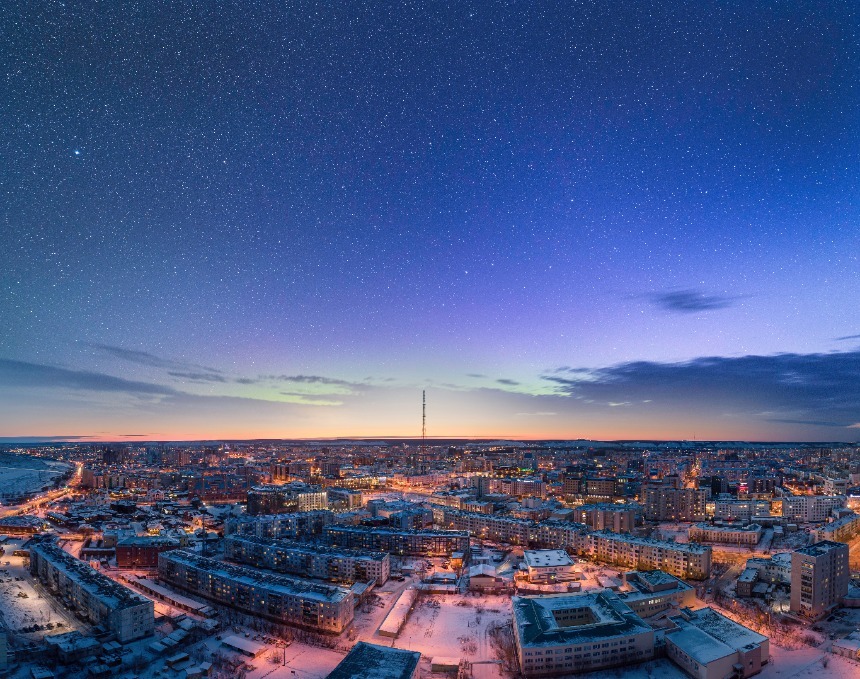
- Record Lowest Temperature: -83.9°F (-64.4°C) on February 5, 1891
- Population: 355,443 as of the 2021 Census
A little farther south than Verkhoyansk and Oymyakon but considerably larger is the coldest city in the world, the mining town of Yakutsk in Russia. Over 350,000 people brave the brutal winters when average temperatures fall below zero for months on end. Yakutsk has the coldest winter temperatures for any city its size or larger in the world. The average temperature in December is -34.6°F (-37°C).
Summers in Yakutsk are sunny, comfortably warm, and sometimes even hot, with daily maximum temperatures exceeding +86°F (30°C). In July, the average temperature is 67.8°F (19.9°C).
Yakutsk was first settled in the 13th and 14th centuries by the Yakuts people, one of the tribes indigenous to the Siberian region. The city was taken over by Russia in 1639. Since then, Yakutsk has grown into a sizable city with over 350,000 residents. Its economy is largely driven by mining, with coal, gold, and diamonds being the primary products. Yakutsk also has a growing tourism industry focused on its uniquely cold climate, including the Permafrost Kingdom, which lets visitors get a unique glimpse of the permafrost that underpins the Siberian region.
6. Fort Vermilion, Canada
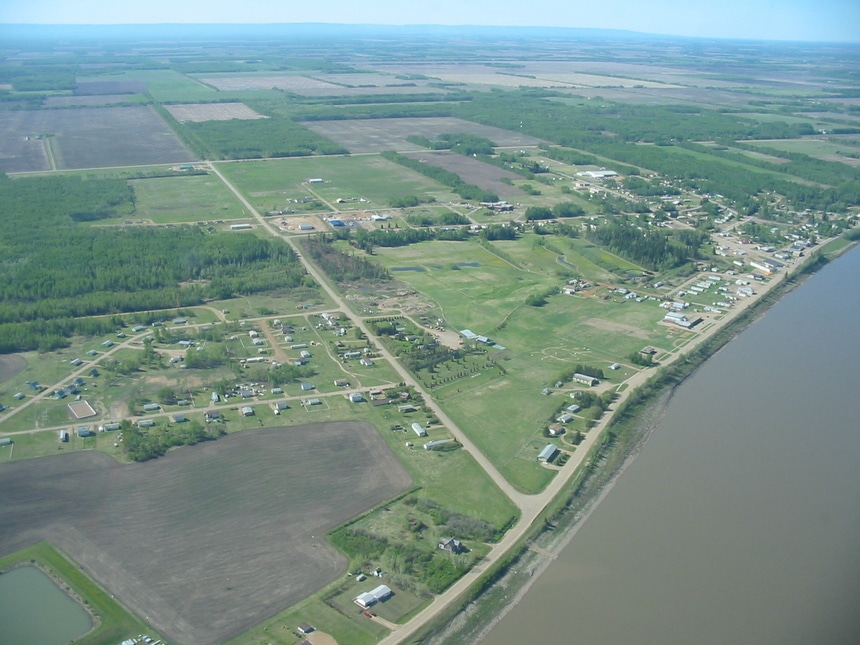
- Record Lowest Temperature: -78.2°F (-61.2°C) on January 11, 1911
- Population: 753 as of 2021
The coldest temperature in North America recorded at a place still inhabited today belongs to Fort Vermilion in northern Alberta, Canada. A remote Canadian military outpost in the Yukon, Snag, recorded a slightly lower temperature but has since been abandoned.
Fort Vermilion was first settled by indigenous tribes centuries before Europeans arrived. The fort was built in 1788 by the North West Company, which operated fur trapping and trading businesses in the area. While the fur trade has long since petered out, a hardy 753 residents still live in Fort Vermilion, primarily ranchers and First Nations people.
7. Fairbanks, Alaska
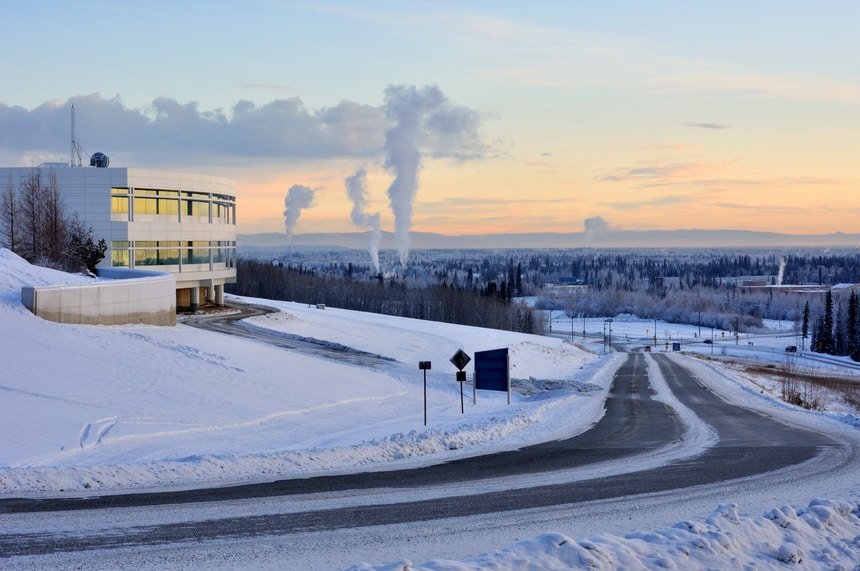
- Record Lowest Temperature: -66°F (-54.4°C) on January 14, 1934
- Population: 32,702 as of 2021
Based on average annual temperature data, Fairbanks, Alaska, is the coldest city in the United States, with a population of over 25,000. It is also one of the US towns with the coldest recorded low temperature at -66°F (-54.4°C). This record ties West Yellowstone, but Fairbanks is listed first because it’s colder on average throughout the year. The average annual temperature in Fairbanks is 27.6°F (-2.4°C) compared to West Yellowstone’s 34.8°F (1.6°C).
Fairbanks is located deep in the heart of interior Alaska, so there’s no water around to keep temperatures elevated during the winter. Additionally, Fairbanks is located in a valley that collects cold air during the long polar nights.
Fairbanks is a relatively large city despite its remote location deep in Alaska’s northern interior. It is home to the University of Alaska Fairbanks, the flagship campus of the University of Alaska System. Thus a fair amount of Fairbanks’ economy relies on the University and the students, professors, and staff it attracts. Fairbanks has also been a significant jumping-off point for oil and gas exploration in Alaska’s North Slope, including the construction of the Trans-Alaska pipeline.
Today, tourism is playing an increasing role in Fairbanks’ economy. The city is the gateway to Mt Denali, the tallest mountain in the United States, as well as a vast expanse of rugged wilderness popular among hunters, fishermen, hikers, and other outdoor enthusiasts. Fairbanks is also popular for viewing the Aurora Borealis, given its high latitude and long winter nights.
8. West Yellowstone, Montana
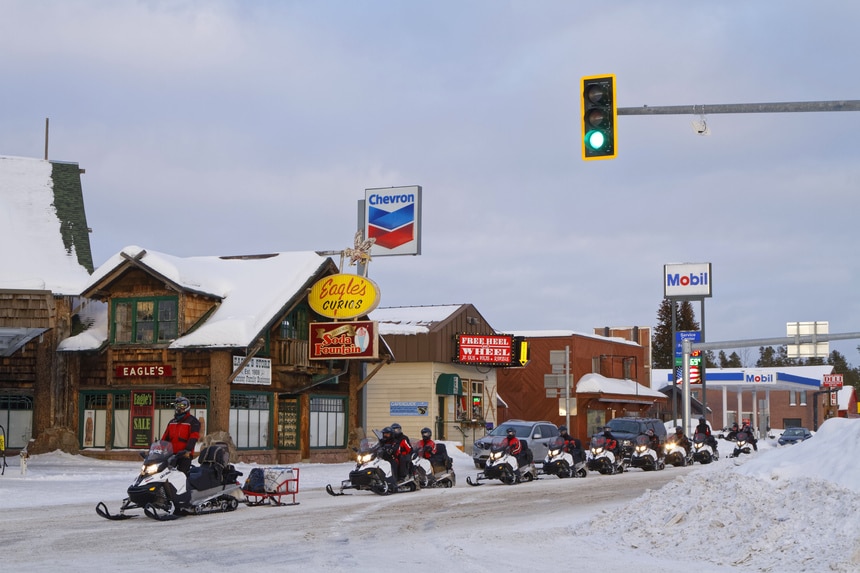
- Record Lowest Temperature: -66.0°F (-54.4°C) on February 9, 1933
- Population: 1,269 as of 2021
While not the northernmost town in America, West Yellowstone beats Utquiagvik for the lowest recorded temperature and ties Fairbanks, despite being thousands of miles south of either Alaskan town. West Yellowstone’s record low temperature of -66.0°F (-54.4°C) occurred on February 9, 1933, during a significant cold air outbreak.
West Yellowstone is one of America’s coldest towns because of its position high in the interior Rocky Mountains, close to the source of Arctic air in Canada, and at a high elevation, so heat from the ground has less atmosphere through which to pass before escaping to space. West Yellowstone warms considerably in the summer but still records subfreezing temperatures on clear mornings in June, July, and August.
West Yellowstone is the primary gateway to Yellowstone National Park, a popular tourist destination. As a result, many of its residents are engaged in the tourism industry, maintaining hotels and offering guided expeditions inside and outside the park.
9. Kautokeino, Norway
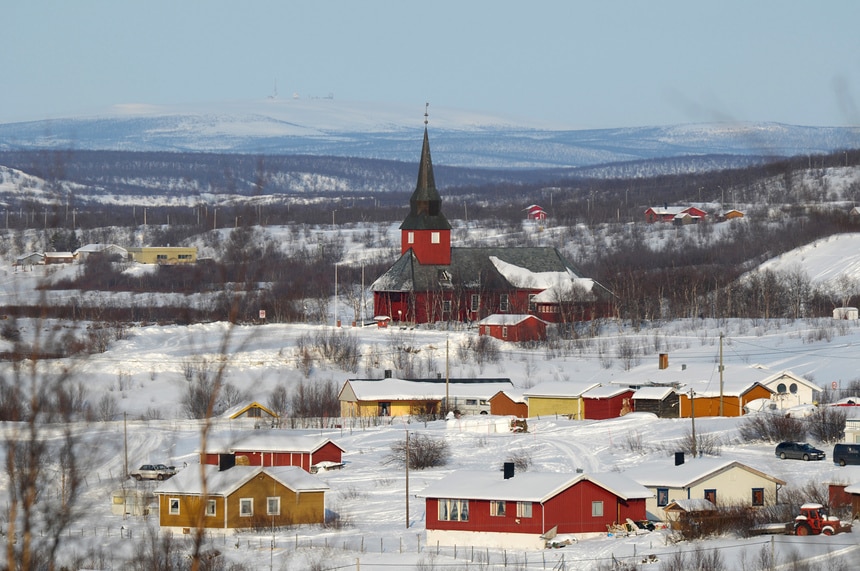
- Recorded Lowest Temperature: -58.5°F (-50.3°C) on January 27, 1999
- Population: 2,877 as of 2022
The coldest town in Europe is Kautokeino, Norway, located near the country’s northernmost tip. Its record low temperature is -58.5°F (-50.3°C). Perhaps more well-known is the town of Hell, Norway, located on the railway line to Kautokeino. It is only somewhat warmer, with plenty of opportunities to enjoy the unique experience of being in Hell when it’s frozen over.
The Sami people, a tribe indigenous to northern Norway, mainly populate Kautokeino. Kautokeino is one of the tribe’s major cultural centers and provides services for surrounding villages, such as education and healthcare. The town also serves as a gathering place for significant cultural festivals and events.
10. Utqiagvik, Alaska
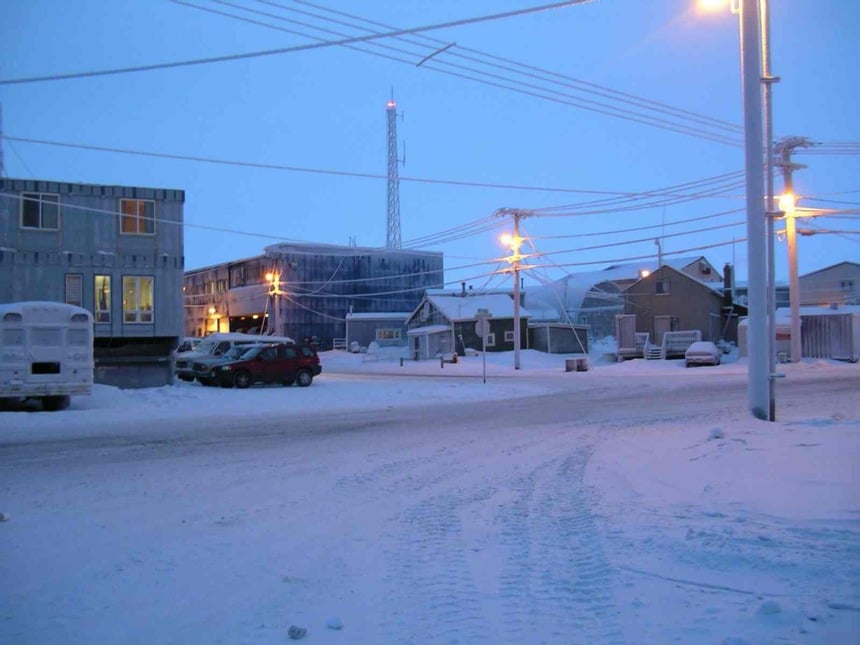
- Record Lowest Temperature: -56°F (-48.9°C) on February 3, 1924
- Population: 4,927 as of 2020
The northernmost point in the United States, Utqiagvik is also (unsurprisingly) among the coldest. Its record low temperature is “just” -56°F (-48.9°C), considerably less cold than other towns in the high Arctic and even less cold than West Yellowstone, located over 1000 miles to the south. Why? It all has to do with Utquiagvik’s position right on the coast of the Arctic Ocean and relatively near the Bering Strait. While sea ice does form in the Arctic Ocean during the winter, it is relatively thin, and heat from the water lurking below is just enough to make it hard for temperatures to plummet in quite the same way as places farther inland.
Utqiagvik was traditionally used as a hunting, fishing, and wild root gathering place by indigenous Inupiat peoples. However, it is now a significant hub of activity for oil and gas extraction, and many of its residents are employed by the energy sector.
11. International Falls, Minnesota
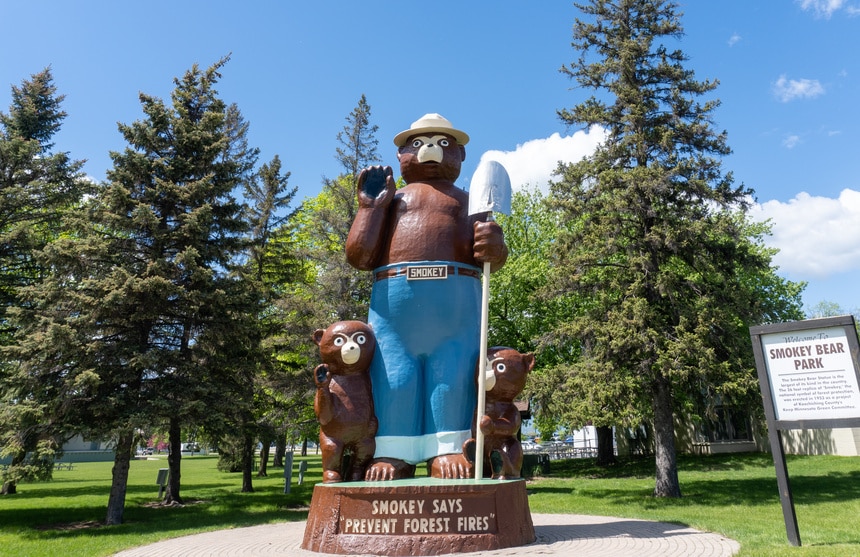
- Record Lowest Temperature: -55°F (-48.3°C) on January 6, 1909
- Population: 5,718 as of 2021
Nicknamed the “Icebox of the Nation,” International Falls may not quite be as cold as other towns farther west in the US, but it’s still plenty chilly. Its record-low temperature is just one degree behind Utquiagvik’s! International Falls can get so cold because it has first dibs on cold air masses coming south from Canada before they have time to warm up in the stronger mid-latitude sun.
International Falls was first inhabited by indigenous Ojibwe tribes and later by a small number of missionaries and fur traders in the 17th century. The town’s modern incarnation began around the turn of the 20th century when it was identified as an ideal site for a paper mill, given the nearby falls and vast forests. The paper mill has been the primary employer in the town ever since, though it has been laying off employees and closing down machines in recent years.
Final Thoughts
The very coldest places to live on Earth are research stations in Antarctica. For being very cold, you cannot beat high elevation, nights that last six months, and being completely surrounded by ice. The coldest places where people live are mostly scattered across the Arctic in Russia, Canada, and Alaska. These locations all benefit from the long polar nights, and the coldest temperatures are found in the interior regions away from the ocean, where cooling is most efficient, even if it’s not quite the North Pole itself.




